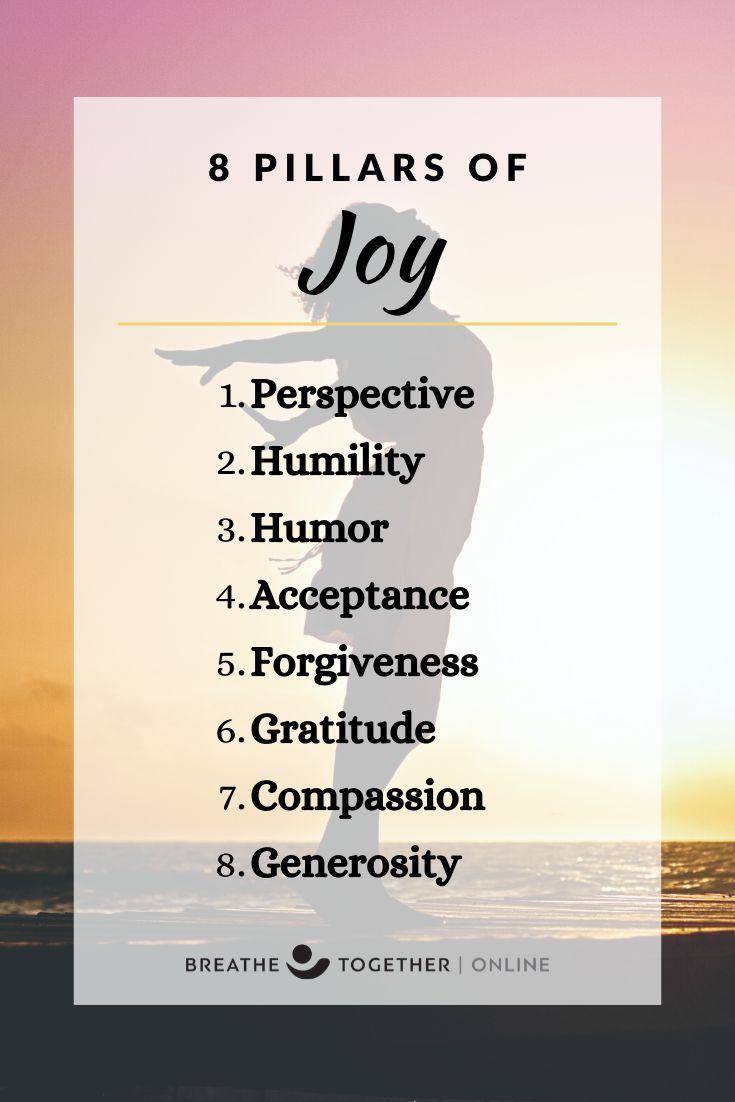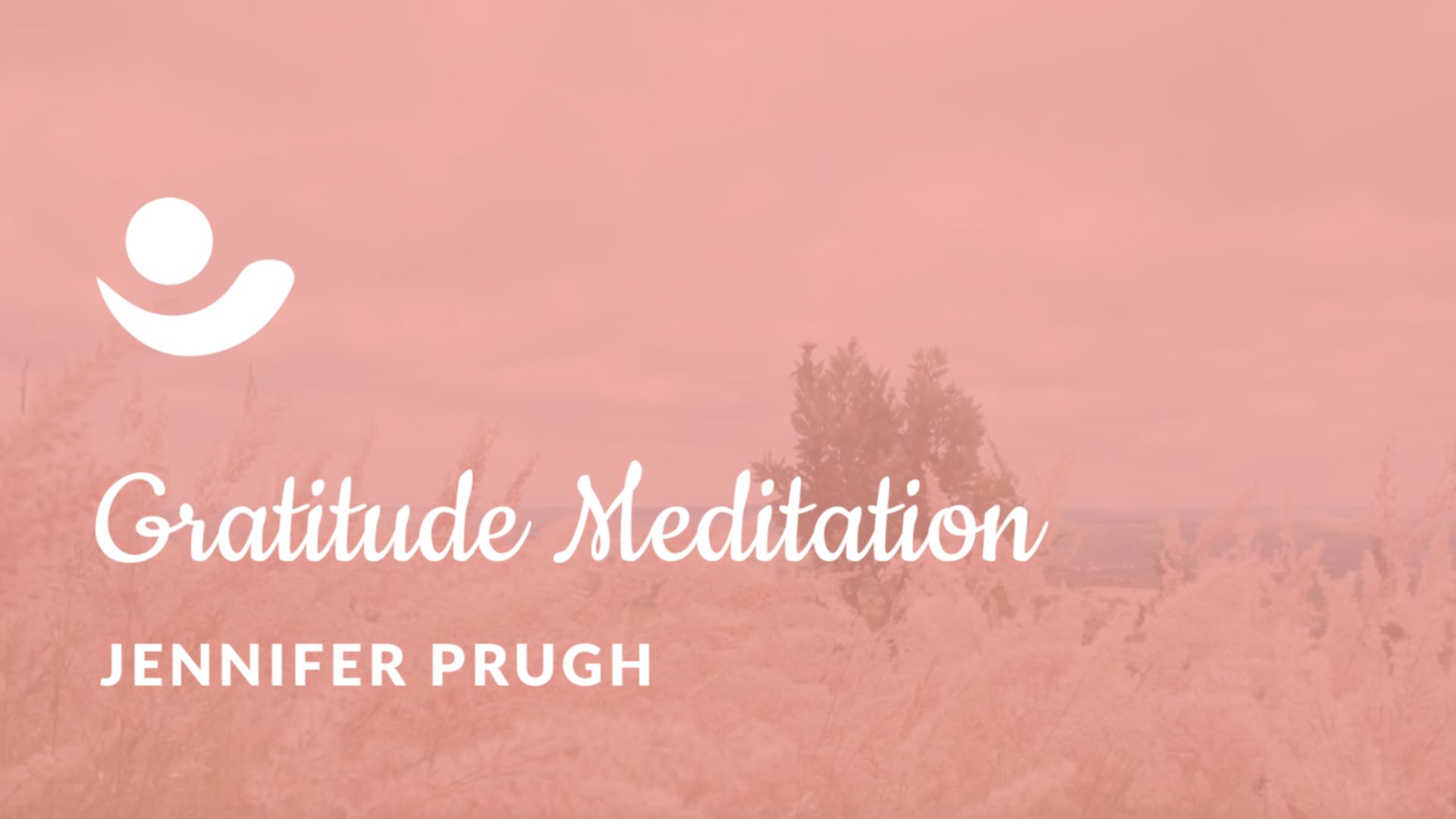Welcome to Mindfulness of Emotions. Each month, we’ll focus on a different emotion, inviting you to join the process of open and honest self-exploration. Emotions come and go; bringing our attention inward allows us to observe, accept, and transform them. Combining the ancient practices with the most recent scientific research, we’ll mindfully seek to separate ourselves from our experiences and thrive regardless of the circumstances. Last month, we introduced joy, which we’ll continue exploring this month.
In the last decade, it has become almost fashionable to explore the connection between feeling happy and living longer. The scientists seem to agree with the spiritual teachings that kindness, generosity, gratitude, and compassion (among other positive factors) are at the core – the pillars – of human well- being. Still, there is a subtlety that we should be mindful of in the pursuit of happiness and longevity. In The Book of Joy: Lasting Happiness in a Changing World, two of the greatest spiritual masters and humanitarians of our time, the Dalai Lama and Desmond Tutu, discern eight pillars of joy.
Four are qualities of the mind
- Perspective
- Humility
- Humor
- Acceptance
The other four are qualities of the heart
- Forgiveness
- Gratitude
- Compassion
- Generosity

Mind Pillars
How we see the world (and ourselves in it) determines how we feel about our lives. Changing our emotions is more difficult than trying to shift our approach to the experiences that trigger them. Broadening our perspective gives us the ability to expand myopic, narrow-minded, and self-centered points of view and see the events in our lives (especially the challenging ones) in a bigger and more neutral context. Reframing a negative experience means widening our horizons and, in the midst of the tumult, finding an opportunity for growth. Joy blossoms not in spite of suffering, but through it. As Buddhist teachings point out, suffering is unavoidable, but pain is optional.
To understand humility, the second pillar of joy, we might not have to look further than its Latin root, “humus,” meaning earth or soil. Humility is that grounding force that helps us embrace life with humbleness and grace. Humor and humility are closely related. “Is it any surprise that we have to have a sense of humility to be able to laugh at ourselves and that to laugh at ourselves reminds us of our shared humanity,” observes Douglas Abrams in the same book. Acceptance is strongly integrated with the other three mind pillars; we need a healthy perspective, a powerful dose of humility, and a liberating sense of humor to embrace our life with all of its ups and downs. Acceptance is the strength to go on, no matter how steep the road ahead is. All four of the mind pillars are working together “to ease the ride, to go from that bumpy axle (dukkha), with all its suffering, stress, anxiety, and dissatisfaction, to the smooth axle (sukha) with its greater ease, comfort, and happiness.”
Heart Pillars
The first of the heart pillars of joy, forgiveness, is there to help us shed the past in order to focus and appreciate the present. Gratitude is the ability to shift our perspective toward the abundance in our lives and away from the confining self-absorption that the ego leads us to. Together, forgiveness and gratitude defy fear, which depletes joy. Human brains have evolved with a negativity bias in order to sort through what’s dangerous to our survival. However, the most recent research on gratitude, compassion, and generosity firmly demonstrates that people who cultivate these traits have more optimism, vitality, greater life satisfaction, and less anxiety and depression symptoms. According to the UC Davis Professor Robert Emmons, considered one of the world’s leading scientific experts on gratitude, people in that category don’t ignore the negative aspects of life, but choose to appreciate what is positive as well.
Compassion literally means “to suffer with.” Compassion is a naturally evolved trait, not only in humans, but in animals as well, and is essential for our survival. The data shows that our instinct is to help others, not compete with them. Many studies provide evidence that a compassionate lifestyle may improve longevity, mostly because it decreases the levels of stress by triggering our centers of pleasure when we care for other beings. There is growing interest in developing compassion cultivation programs, some deriving from traditional Buddhist practices such as metta, also known as loving-kindness meditation. The Center for Compassion and Altruism Research and Education at Stanford University combines the traditional approach with the latest scientific research in their Compassion Cultivation Training (also offered at Breathe Together Yoga studio).
Generosity grows out of compassion. As Archbishop Desmond Tutu points out, “It is in giving that we receive.” Having a sense of purpose seems to be a powerful force behind human generosity. Scientists and spiritual teachers arrive at the same conclusion: giving to others brings more joy than selfishly focusing on ourselves. According to Neuroscientist Richard Davidson, we are equipped with a brain circuit dedicated entirely to generosity. His unified theory of the happy-brain identifies another three independent brain circuits, which are in control of our well-being. The first one is our ability to maintain positive states where love and compassion are the main contributors. The second is in charge of our ability to recover from negative states. And, the third one is responsible for our ability to focus and avoid mind-wandering, in which meditation plays an important role.
As Desmond Tutu puts it,
“The goal is not just to create joy for ourselves but… to be a reservoir of joy, an oasis of peace, a pool of serenity that can ripple out to all those around you.”

















2 replies on “Understanding The Eight Pillars of Joy”
This was a beautiful article, thank you
Thank you, I am glad you enjoyed the article!